
Culture
16:37, 14-May-2019
All you need is kimchi and rice in S. Korea
Li Yimei
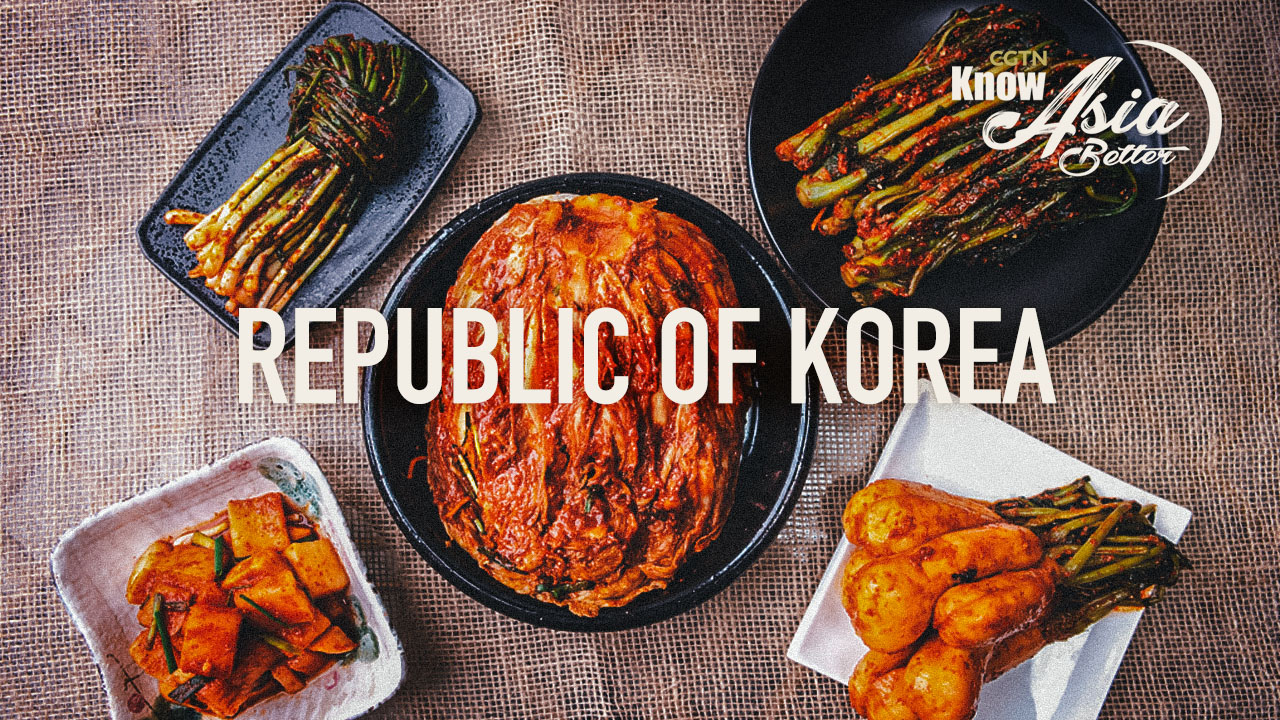
An ancient Korean saying states that “if you have kimchi and rice, you have a meal.”
Kimchi, a spicy Korean side dish made of Chinese cabbage and other vegetables, plays a vital role in the Korean diet. It comes with almost every meal in S. Korea.
The history of kimchi can be traced back to the period of the Three Kingdoms (57 B.C. to A.D. 668) when other kingdoms recorded how Koreans were preserving food. In the geographic location of today's S. Korea, northeast Asia, the winters are biting cold. To prevent food from freezing, salt is needed. Curing thus became the most popular way of food preservation at that time.
The original kimchi was made from radish, which was quite different from what we see today. During the period of the Goryeo Dynasty (918-1392), more vegetables from other kingdoms, such as Chinese cabbage, have been added to the traditional kimchi recipe. In the 16th century, during the Korean-Japanese war (1592-1598), kimchi in the form we know today has been developed due to the introduction of red pepper from Japan.
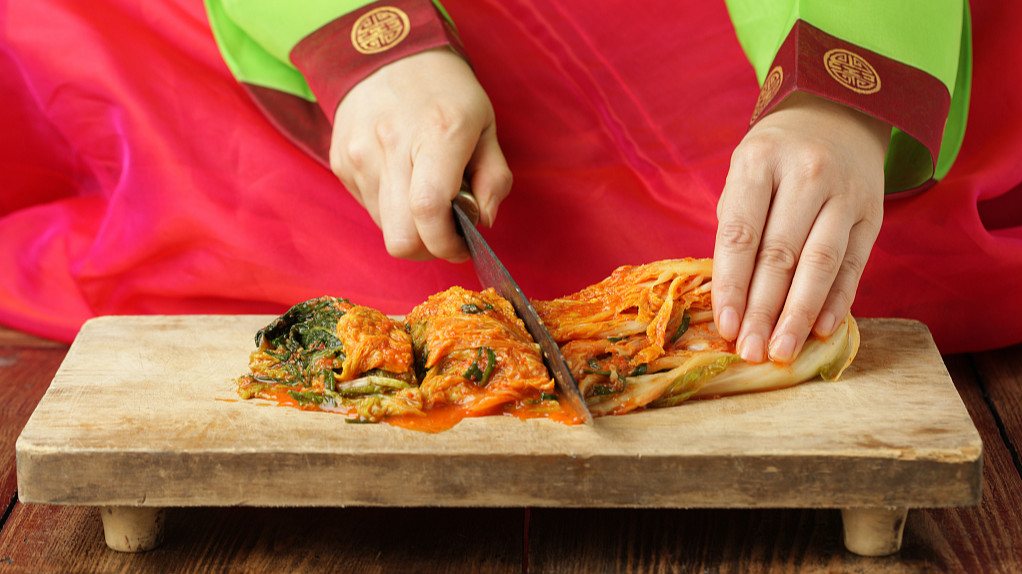
Kimchi is an ingredient or side dish in almost every meal in S. Korea. /VCG Photo
Kimchi is an ingredient or side dish in almost every meal in S. Korea. /VCG Photo
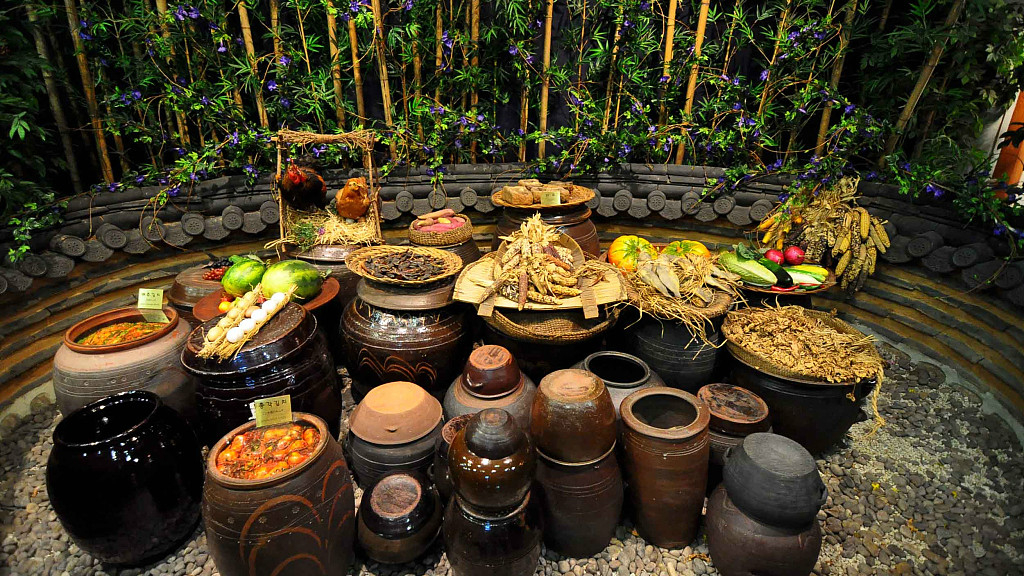
Kimchi in traditional Korean fermentation pots. /VCG Photo
Kimchi in traditional Korean fermentation pots. /VCG Photo
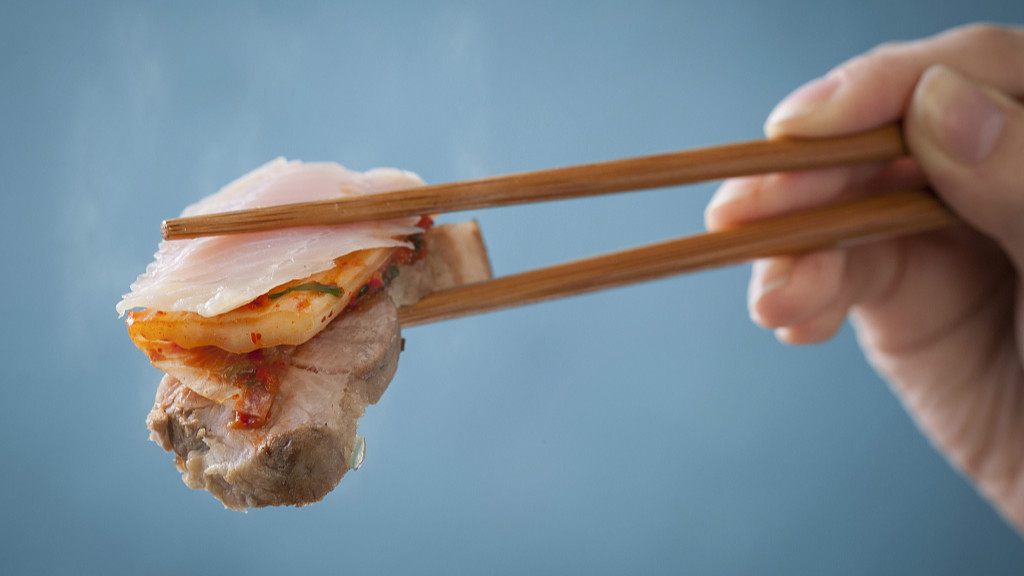
Eating kimchi with pork is pupolar in S. Korea. /VCG Photo
Eating kimchi with pork is pupolar in S. Korea. /VCG Photo
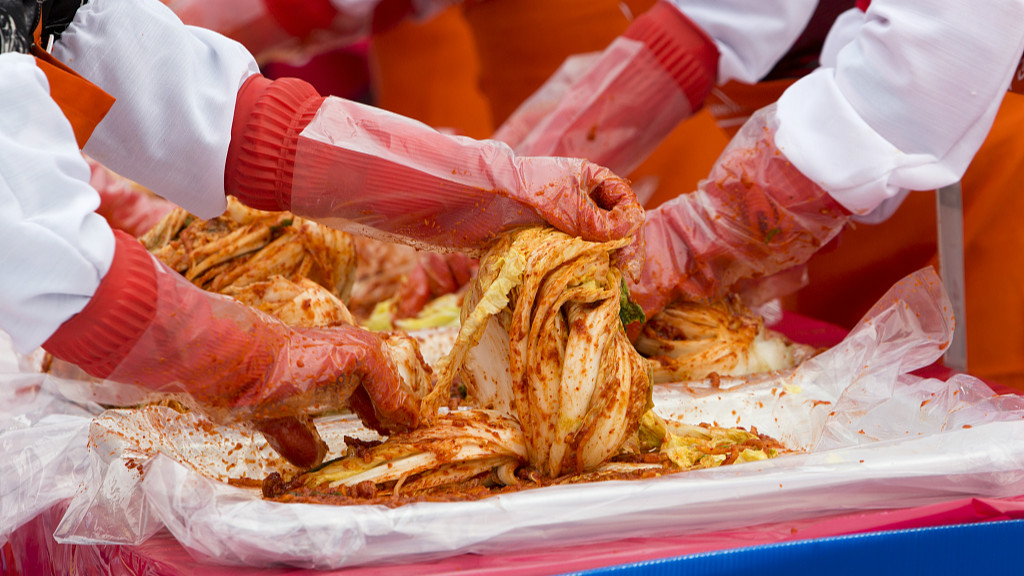
Each family has its own way to make kimchi. /VCG Photo
Each family has its own way to make kimchi. /VCG Photo
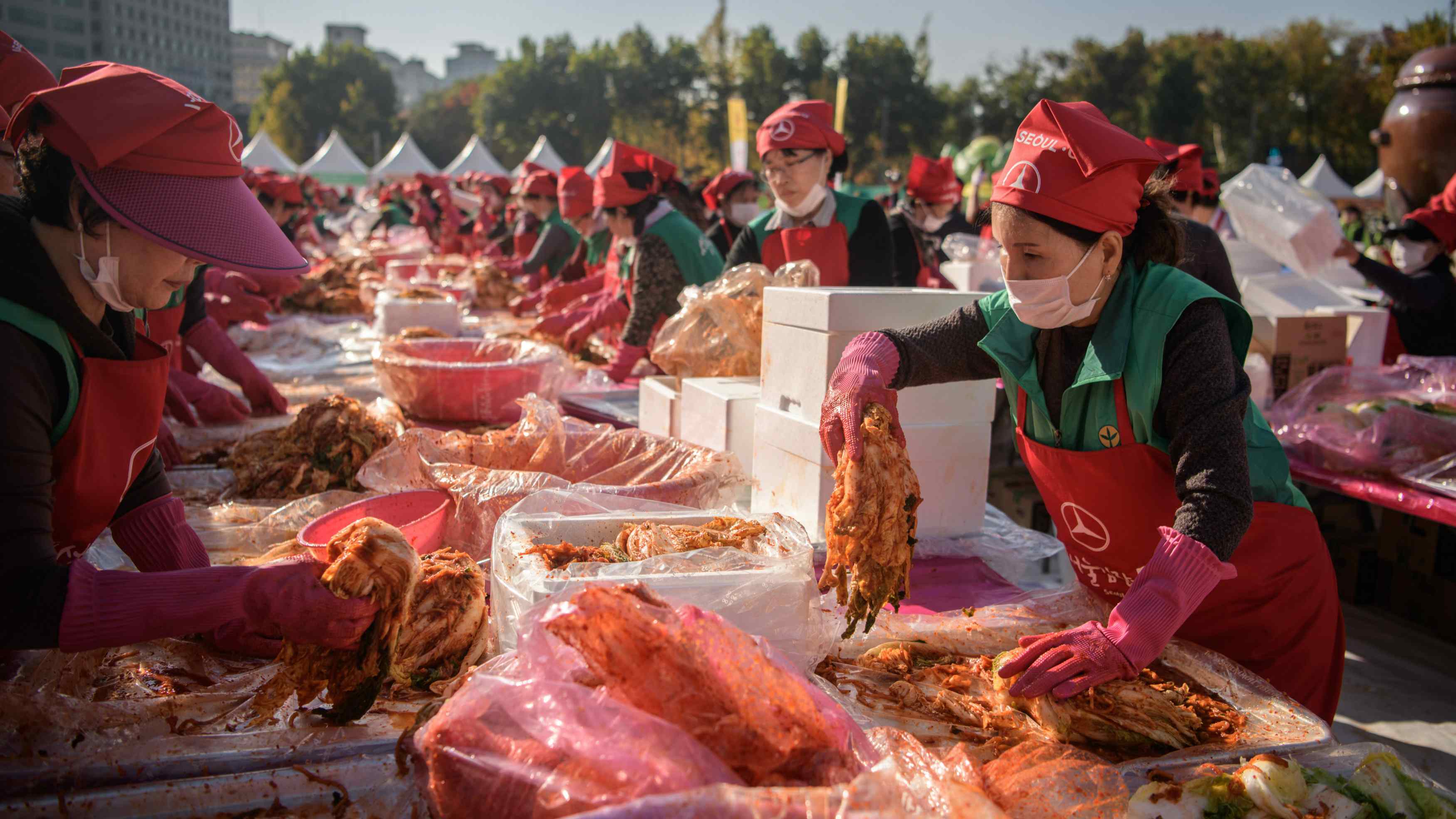
Women are participating in a kimchi making festival in Seoul, S. Korea. /VCG Photo
Women are participating in a kimchi making festival in Seoul, S. Korea. /VCG Photo
There is no single recipe of preparing kimchi. Every family has its own version of the basic recipe with different ingredients. In S. Korea, where women are the center of the kitchen, mothers take great pride in their own way of preparing kimchi.
Kimchi has also been recognized for its health benefits. Since the old times, Koreans eat a portion of kimchi with every rice meal. People realized the dietary fiber present in kimchi helps them with digestion. Modern nutritionists found that the health benefits of kimchi come from the lactic acid bacteria produced during the fermentation process. The low-calorie aspect of kimchi helps to clear the blood vessels.
Kimchi has come a long way. Now it has been added to the UNESCO Intangible Cultural Heritage of Humanity List, becoming a recognized, iconic cultural product of S. Korea.
What are the cultural elements that best represent Asia? Follow up the "Know Asia Better" series. It will offer you a glimpse of 47 Asian countries, through architecture, art or cultural figures to show you a diversified Asia that you may never have noticed before. Themed in the exchanges and mutual learning among Asian civilizations and building a community with a shared future for mankind, the Conference on Dialogue of Asian Civilizations will be held in Beijing in May.
(Cover image designed by Fan Chenxiao)

SITEMAP
Copyright © 2018 CGTN. Beijing ICP prepared NO.16065310-3
Copyright © 2018 CGTN. Beijing ICP prepared NO.16065310-3